This site is part of various affiliate programs. Links may give us a small compensation for any purchases you make, at no additional cost to you. Please read the disclaimer policy for full details.
If you don’t have time to read the entire article, then the best laptop for photo editing under $1000 is the Lenovo Legion 5, with the Lenovo Flex 5 as the best budget laptop.
Modern photo editing laptops come in such a variety of specifications that it can be difficult to sort through the contenders to find the best laptop for photo editing under 1000 dollars.
I know that many articles on the best laptops for photo editing are stuffed full of choices that aren’t made with photographers in mind, so are often poor choices for us.
In this article, I have synthesized my rigorous research and testing to show only the absolute best laptops for photography under $1000 that all make excellent choices for photo editors. Each laptop must meet some general criteria to be included in this list, including:
- Modern, fast processor equivalent to 10th-gen Intel i5 at a minimum
- At least 8GB of RAM
- Fast SSD of at least 256GB
- Color accurate display with as close to 100% of the sRGB spectrum as possible
- Excellent value for money
But to determine what laptop is best for photo editing, I then delved down into each laptop and carefully checked each against the more detailed criteria shown further down this article, so that you can be assured that only the absolute best laptops are recommended here.
What is the Best Laptop for Photo Editing Under $500?
If you are looking for a more budget choice, then you can take a look at one of the best laptops for photo editing under 500 dollars, as below. For more choices, read the related article on budget photo editing laptops.
Best Laptop Under $500 for Photo Editing
- Intel Core i3-1005G1 10th Gen Processor
- 4 GB RAM & 128 GB NVMe SSD
- 15.6″, 1080p screen with 57% of the sRGB gamut
- Best cheap laptop for photo editing
- Colors don’t look as good as on laptops with better displays
What is the Best Value for Money Photo Editing Laptop?
Between the $500 and $1000 laptops, we find a sweet spot containing the best value for money laptop for photo editing. This is perfect for hobbyists, but aspiring professionals might want to look at the next laptop for the ultimate choice.
Powerful and Cheap
- 2 in 1 laptop where the screen folds over to form a tablet
- Powerful 6-core processor plus 16GB RAM for strong performance in hardware-intensive tasks (eg. warp filter in Photoshop)
- Includes digital stylus so usable for drawing straight out of the box
- An excellent budget choice that can still run the same programs as more high-end laptops
- Long battery life and relatively light, so can be used away from a desk
- The screen only covers about 74% of the sRGB color space, so there is a trade-off compared to more expensive laptops
What is the Best Laptop for Photo Editing Under $1000?
Note: The Lenovo Legion 5 is now slightly over $1000, but this is still worth the price asked. If you are on a very strict budget, then the ASUS TUF Gaming F17 is a good choice below $1000, although it only has a screen that covers 62.5% of the sRGB spectrum.
Best Laptop Under $1000 for Photo Editing
- Powerful AMD Ryzen 7 5800H 8-core processor
- 16 GB of RAM & 512 GB SSD
- 15.6″, 1080p screen with 100% of the sRGB gamut in the 144 Hz screen model
- 4GB, NVIDIA GeForce RTX 3050 Ti graphics card
- Long, 9 hour battery life
Compare The Best Laptops for Photo Editing Under 1000 Dollars
Compare the best laptop for picture editing in the table below, and read the full reviews further in the article. The best affordable laptop for photo editing is the Lenovo Legion 5.
Laptop | CPU | Memory & Battery Life | Display & GPU | $ | |
Intel i5-10300H 4-core @ 2.5 – 4.5 GHz | 8GB RAM & 512GB SSD 7.5 hours | 17.3" 1080p 4GB GeForce GTX 1650 Ti | |||
Intel i5-9300HF 4-core @ 2.4 - 4.4 GHz | 32GB RAM & 1TB SSD 4 hours | 15.6" 1080p 93% sRGB 4GB GeForce GTX 1650 | |||
Intel i5-10300H 4-core @ 2.5 - 4.5 GHz | 8GB RAM & 512GB SSD 3 hours | 15.6" 1080p 94% sRGB 4GB GeForce GTX 1650 ti | |||
| AMD Ryzen 7 4800H 8-core @ 2.9 - 4.2 GHz | 16GB RAM & 512GB SSD 9 hours | 15.6" 1080p 100% sRGB 6GB GeForce GTX 1660 ti | ||
AMD Ryzen 5 4600H 6-core @ 3.0 - 4.0 GHz | 8GB RAM & 512GB SDD 7 hours | 15.6" 1080p 65% sRGB 4GB GeForce GTX 1650 | |||
Lenovo Flex 5 | AMD Ryzen 5 4500U 6-cores @ 2.3 - 4.0 GHz | 16GB RAM & 256GB SSD 10 hours | 14" 1080p Shared Intel UHD | ||
Intel i3-1005G1 2-core @ 1.2 - 3.4 GHz | 4GB RAM & 128GB SSD 4 hours | 15.6" 1080p Shared Intel UHD |
Minimum Requirements of the Best Budget Laptop for Photoshop
When looking for the best budget laptop for Photoshop, you need to ensure that your choice meets the minimum laptop specs for photo editing, as below. Every one of the best affordable laptops for photo editing reviewed in this article meets the minimum specs at the least, with most also meeting the recommended specs.
For more details on which of these criteria I would consider the most important and why, take a look at the next section.
Adobe Photoshop Requirements
Photoshop is, in my opinion, the best software for photo editing, and along with Lightroom makes the photo editing workflow a breeze. If you don’t yet have a copy, then Adobe have an excellent value for money photography plan that I use everyday, and I recommend you check out.
| Windows & Mac Min. Requirements | Recommended Requirements | |
| Processor | Multicore with 64-bit support; 2 Ghz or faster on Windows | As minimum requirements |
| Operating System | Windows 10 Version 1809 (64-bit); macOS 10.14 | Any more recent Windows version; macOS 10.15 or later |
| RAM | 8 GB | 16 GB |
| Graphics Card | GPU with DirectX12 support and 2GB GPU memory – nVidia GeForce GTX 1050 or equivalent | 4GB GPU memory – nVidia GeForce GTX 1660 or Quadro T1000 is recommended |
| Hard Drive Space | 4 GB or more of available hard-disk space for installation; additional free space required during installation (cannot install on a volume that uses a case-sensitive file system) | SSD and separate scratch disk recommended |
| Monitor Resolution | 1280 x 800 display at 100% UI scaling | 1920 x 1080 display at 100% UI scaling |
| Internet | Internet connection and registration are necessary for required software activation | As minimum requirements |
Checklist to Find the Best Photo Editing Laptop
Below is a breakdown of the most important requirements to determine the best photo editing laptop, specifically one that can run Photoshop and Lightroom to a high level with minimal lag.
- Processor (CPU) – this determines how fast Photoshop can perform actions like opening a RAW file or applying a filter.
- Memory (RAM) – the speed and RAM capacity will determine how quickly more complex actions can be performed like transformations.
- Graphics Card (GPU) – some Photoshop features require GPU support in order to work.
- Physical Storage (Memory) – the speed and capacity of a hard drive will determine how many photos you can store and how quickly basic Windows functions like startup or opening Photoshop work.
- Display – this is one of the most important and overlooked areas, particularly in cheap laptops for photo editing, and can be broken down as below.
- Resolution – the larger the better
- Screen Size – a trade-off between portability and usability
- Panel Type – IPS panels are the ultimate standard in colors and viewing angles
- Color Gamut – a larger color gamut equals more accurate colors with less banding
- Touch Screen – with this you can do away with a separate drawing tablet and draw straight onto the screen.
- Battery Life – longer battery life means greater portability but increased weight
- Compatibility with Accessories – is it possible to easily connect external monitors or drawing tablets?
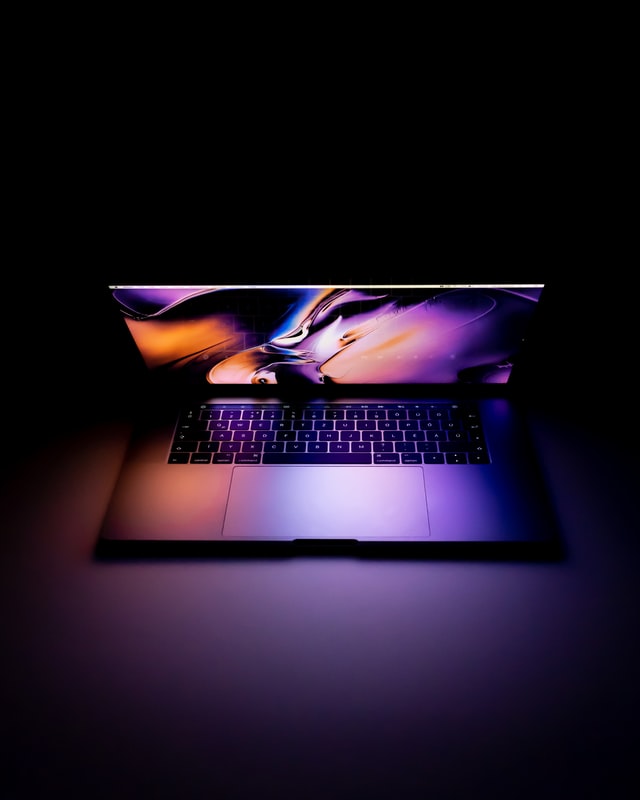
Processor (CPU)
The processor is the main component that determines how quickly you can perform tasks within Photoshop and within your laptop in general.
Historically, Intel processors have always been preferred for Photoshop and other graphics editing programs that operate on single, or small numbers, of threads, but AMD have now caught up to, and perhaps even overtaken Intel, meaning that there is very little practical difference between the two brands.
The best determinant of fast CPU performance is clock speed and the number of cores.
For some quick benchmark testing to give you an idea of the practical differences between different processors, take a look at this table for time taken to open a 16-bit RAW file and then to apply a Smart Sharpen filter in Photoshop:
| Processor | Time to Open a 16-Bit RAW | Time to Apply Smart Sharpen |
| AMD Ryzen 5 6-Core @ 3.6 GHz | 1.31 seconds | 24.17 seconds |
| Intel i5 6-Core @ 3.6 GHz | 1.16 seconds | 22.44 seconds |
| AMD Ryzen Threadripper 24-core @ 3.8 GHz | 0.85 seconds | 13.38 seconds |
| Intel i9 18-core @3.0 GHz | 0.94 seconds | 13.83 seconds |
It’s pretty clear from the above that there is little difference between comparable processors in the same price range, but there is a significant speed difference in the most premium processors over the budget models.
Nonetheless, if you are happy to wait a few more seconds when performing actions in Photoshop, the cheaper processors offer much better value for money, and are those that tend to be found in every affordable laptop for photo editing.
Memory (RAM)
RAM is used by Photoshop as temporary storage when performing various computationally complex actions like transformations and storing the history of your actions to enable you to undo them.
If you run out of RAM, then Photoshop will use a scratch disk (essentially using part of your hard drive as virtual RAM), which massively slows down Photoshop performance.
The two key criteria when looking for good RAM performance are:
- The number of GBs of RAM
- The speed of the RAM
Of the two, the number of GBs is the better measure of strong performance, with a minimum of 8 GB needed (but ideally 16 GB). Although Photoshop and Lightroom work perfectly well at these levels, I find that they will use as much RAM as you have (the 32 GB in my desktop are regularly fully utilized by Photoshop), so it’s worth really pushing the boat out to get as much RAM as possible, to minimize scratch disk use.
RAM clock speed is less important, but anything over 3200 MHz will provide slightly better performance versus slower RAM.
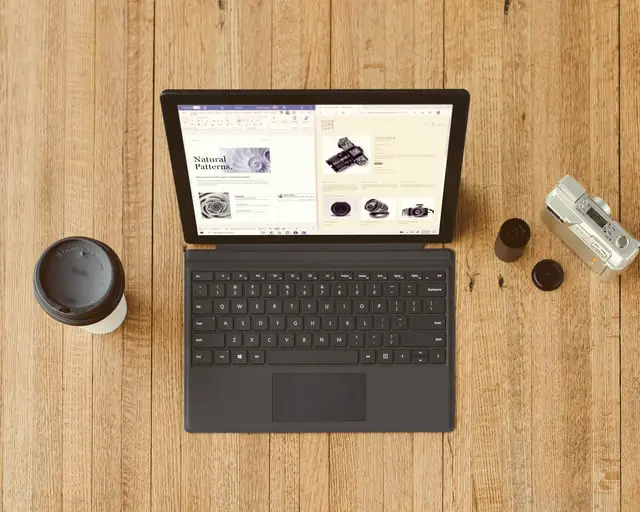
Graphics Card (GPU)
The graphics card is not used extensively by Photoshop, so is not a crucial component in most cases, although there are some features that will not work without a compatible GPU, and some features that are sped up by having a graphics card/
Photoshop features that require a GPU for acceleration
- Artboards
- Blur Gallery – OpenCL accelerated
- Camera Raw
- Image Size – Preserve Details
- Lens Blur
- Neural Filters
- Select Focus
- Select and Mask – OpenCL accelerated
- Smart Sharpen – OpenCL accelerated
Photoshop features that will not work without a GPU
- 3D
- Birds Eye View
- Flick Panning
- Oil Paint
- Perspective Warp
- Render – Flame, Picture Frame, and Tree
- Scrubby Zoom
- Smooth Brush Resizing
The best laptop for photography editing recommended here does not have a separate GPU, but uses graphics that are on-board with the CPU, and uses the RAM as GPU memory. This can result in slowdown if the computer has only a small amount of RAM, but as most of the laptops here have up to 20 GB of RAM, there is plenty to be shared for general use and for the GPU.
Adobe recommends that GPUs have a benchmark test of 2000 operations / second or higher for best performance, but I don’t feel this is relevant for photo editing as the GPU is used very little in most cases.
Physical Storage (Memory)
Physical storage was traditionally on a hard drive (HDD) with movable parts, but all of the best laptops for Photoshop editing today have a solid state drive (SSD), which are much faster than HDDs, although are about 7 or 8 times more expensive.
Essentially, you want the highest capacity SSD that you can afford. It would be even better to have two lower capacity SSDs in your laptop, although this tends to be rare due to space issues.
The SSD will be used by Photoshop in two ways: to store the program & your photos, and as a scratch disk.
The first of these is self-explanatory, but the second, scratch disks, deserve some further explanation. They are Adobe’s term for short-term storage to be used when the RAM is at capacity, or if large amounts of data needed to be temporarily stored. Generally, the scratch disks will not be used (or used very little) if you have sufficient RAM. If you run out of RAM, then the scratch disk is utilized, slowing down performance considerably.
Adobe recommend a second SSD to be assigned as the scratch disk, but as this is unlikely to be found in a laptop, you are better off buying a laptop with greater RAM capacity to see off the need to use a scratch disk.
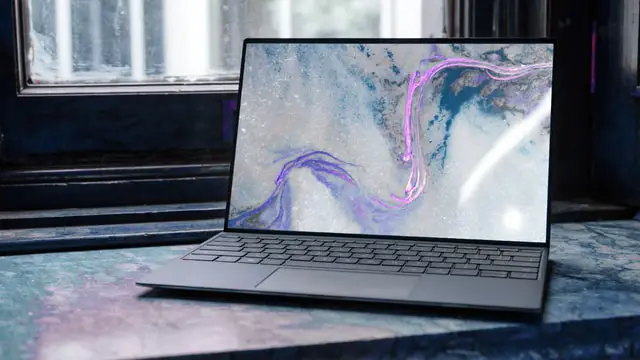
Display
The best laptop screen for photo editing is one that has met several important requirements for resolution, screen size, panel type and color gamut. Generally speaking, laptop screens are a poor substitute for standalone monitors, although I have done my best to find those few laptops with excellent screens with accurate color rendition.
If you intend to use your laptop in a fixed location for a large part of your time, then I would recommend looking for an external monitor. The current best choice is the LG 27UL500 27-Inch IPS Monitor which will give you a beautiful 4K display, but I would recommend taking a look at the article on the best photo editing monitors for more choices.
Resolution
As laptop screens tend to be pretty small, it’s not worth going for 4K resolution, as this will just be wasted in the upscaling you would need to do in order to be able to see anything. All of the laptops here are full HD, 1080p (1920 x 1080 pixels), which I would consider the ideal resolution in a sub-$1000 laptop with a 15″ screen.
Screen Size
Screen size is often a trade-off between screen real-estate and weight. The Goldilocks zone for laptop screens, most people would consider to be at 15.6″. Every laptop reviewed here falls into that category. If you go for a larger screen size than this, then not only is the laptop much bigger and heavier, but also you would need to aim for a higher resolution screen.
Panel Type
Panels comes in three types: IPS, VA, or TN.
- IPS panels offer the widest range of viewing angles, as well as the best color reproduction, but can be susceptible to IPS glow, a phenomenon where the edges of the screen can appear brighter from certain viewing angles, although this is only really noticeable on a black screen.
- VA (or SVA) panels have excellent contrast and are good if you intend to be editing large numbers of black and white images. They have worse color rendition and viewing angles than IPS panels.
- TN panels are found in the cheapest laptops, as they are the most basic construction. They have the worst color performance and viewing angles.
Color Gamut
One of the most important characteristics of laptop displays for photo editing is the number of colors that it can show. This is measured in a percentage of a color space, typically sRGB, although NTSC and Adobe RGB (1998) are also common standards.
sRGB contains about 35% of the colors visible to human eye, and is the standard for the internet and most home computing. Achieving 100% of the sRGB gamut generally means that a display offers very good color reproduction that is suitable for hobbyist photo editing. When compared to a larger color space, like Adobe RGB (1998), it is missing some shades in the greens and cyans, although these will be difficult to see with the unaided eye.
It’s difficult to find laptop screens with larger than 100% of the sRGB spectrum at under 1000 dollars, so if you require a wider color space, you will need to either up your budget, or look at a cheap external monitor, which offer better performance for a very fair price.
Touch Screen
You will pay a premium for a touch screen laptop, but this can reduce the amount of accessories you need for Photoshop work, and so is particularly useful if you intend to travel with you laptop.
If you do not want a touch screen, then you will have to look at getting a separate drawing tablet like the Wacom Intuos Pro if you want to make the most of Photoshop. You can read more options for the best drawing tablets here.
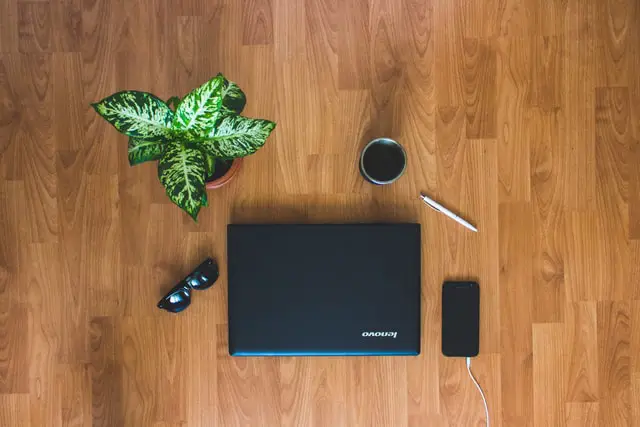
How to Best Setup Your Laptop for Photo Editing
Before using your laptop, you will first need to calibrate the laptop screen for photo editing. Even the best budget laptop for photo editing will require calibration to ensure that the colors are accurate and there is no unintended color cast. Most laptops are far too blue for color accurate photo editing, so this needs to be rectified.
There are a couple of ways to do this:
- Least Effective: Use the Windows tool ‘Calibrate Display Color’, or look at a website that shows test images, then manually calibrate the colors and brightness on your monitor using its on-screen menu. This is not a very good approach if you are serious about your photography.
- Most Effective: Get a hardware calibration device, like the Datacolor SpyderX Pro and use open source software like DisplayCAL. This will automatically calibrate your monitor, and save the results as a color profile that your computer will load on starting each time. Running this every month or so will ensure that you always get accurate colors. This needs to be repeated at regular intervals as the color response of the pixels in your monitor will degrade over time. As this degradation is not uniform, you will need to re-calibrate to keep colors accurate.
You might think that you can ignore this step, as everyone else looking at your photos online via their laptops will not be using a color calibrated device, so it won’t make any difference, but you would be wrong.
I used to think like this, but when I finally started calibrating my laptops and monitors, it opened up details within the colors that I had not seen before and the pictures did look better, even on uncalibrated devices. Even better, I have never since had any problems when printing my photos, where before they never quite looked the same as they did on screen. Now, they are always identical.
Full Reviews of the Best Laptops Under $1000
Find out what is the best laptop for photo editing in the full reviews below. These are the best laptops you can currently buy if you are serious about photography.
- Lenovo Legion 5 Gaming Laptop – The Best Photo Editing Laptop Under $1000
- Lenovo Flex 5 – The Best Value for Money Photo Editing Laptop
- ASUS TUF Gaming F17
- Apple MacBook Air 13-inch
- Lenovo IdeaPad L340 15.6″
- Dell Gaming G3 15 3500
- ASUS TUF Gaming Laptop A15
- HP Envy x360 Convertible Laptop
1. Lenovo Legion 5 Gaming Laptop
Best Laptop for Photo Editing Under 1000 Dollars
- CPU: AMD Ryzen 7 5800H 8-core @ 2.9 – 4.2 GHz
- RAM: 16 GB
- SSD / HDD: 512 GB
- Screen Size: 15.6″
- Max Resolution: 1080p (1920 x 1080)
- Panel Type: IPS
- sRGB Color Space: 100%
- Touch Screen? No
- Graphics: 4GB NVIDIA GeForce RTX 3050 Ti
- Battery Life: 9 hours
- Weight: 5.42 lbs
- Pros:
- 8-core high-end processor
- Super-fast M.2 NVMe SSD
- Very powerful 6GB GPU
- Excellent color reproduction with 100% sRGB and 144 Hz refresh rate
- Long battery Life
- Cons:
- Heavy and less portable
- Only just below $1000, depending on the model
With a genuinely outstanding screen that delivers 100% of the sRGB gamut and a 144 Hz refresh rate, using the Lenovo Legion 5 for photo editing is a breeze, with sharp, clear images that accurately represent the colors as your camera recorded them. The 8-core Ryzen 7 is the most powerful processor of any laptop reviewed here and powers through any Photoshop task with ease.
The 4GB GeForce GPU means there is no slowdown on any of the graphics card accelerated tasks in either Photoshop and Lightroom. Although this graphics card adds extra weight to the laptop, it doesn’t seem to affect battery life, with at least nine hours available for basic tasks, although this will reduce if you are performing a lot of more intensive photo editing.
There is very little to not recommend the Legion 5 with this Ryzen configuration. Every component is top of the line, with perhaps the only potential negative being that the laptop has only 16 GB of RAM and that it is only just below the price point of $1000. But the SSD is an M.2 NVMe type, meaning that even if you run into using Photoshop’s scratch disks, you are very unlikely to see much slowdown in performance.
If you wanted to save a bit more money, then the Asus Vivobook below is also a very good choice, but for those with the budget, this is the best laptop for photo editing under $1000 by a long way.
2. Lenovo Flex 5
Best Budget Laptop for Photo Editing
- CPU: AMD Ryzen 5 4500U 6-cores @ 2.3 – 4.0 GHz
- RAM: 16 GB
- SSD: 256 GB
- Screen Size: 14″
- Max Resolution: Full HD (1920 x 1080)
- Panel Type: IPS
- sRGB Color Space: 74%
- Touch Screen? Yes
- Graphics: On-board Radeon RX Vega 6
- Battery Life: ~ 10 hours
- Weight: 3.64 lbs (1.65 kg)
The Lenovo Flex 5 is one of the most popular laptops on the market, primarily as it is excellent value for money, offering a standard laptop configuration, or with the ability to flip the screen round to use as a tablet with the included stylus.
No other laptop in this price range offers the sheer power of this model, with an up-to-date Ryzen processor and 16GB of RAM.
You only get a 14 inch screen that covers 74% of the sRGB color gamut, but this is actually a reasonable trade-off for most people, particularly hobbyist users. The full HD screen means that it doesn’t seem cramped, and the ability to draw directly on the screen really helps with masking and performing complex actions in Photoshop.
Overall, the Lenovo Flex 5 is an excellent laptop that outperforms its price, and is well-suited to those looking for ultimate value for money.
- Pros:
- Specifications outperform the price
- 2 in 1 use as a laptop and tablet with the screen folded back over the base
- Well-balanced device for word processing, web surfing, drawing and most other tasks (excluding gaming)
- Fast 6 core processor and 16GB RAM offers superior performance in hardware intensive tasks
- Digital pen included, so usable straight out of the box for drawing
- Long battery life, so suitable for use away from a desk
- Capable of easily running Photoshop, Lightroom and other photography programs
- Cons:
- Only 74% of the sRGB color gamut which means a less color accurate display
- Only 14 inch screen, but this makes it more portable
3. ASUS TUF Gaming F17
Best Asus Laptop for Photo Editing
- CPU: Intel i5-10300H 4-core @ 2.5 – 4.5 GHz
- RAM: 8 GB
- SSD: 512 GB
- Screen Size: 17.3″
- Max Resolution: 1080p (1920 x 1080)
- Panel Type: IPS
- sRGB Color Space: 62.5%
- Graphics: 4GB GeForce GTX 1650 Ti
- Battery Life: 7.5 hours
- Weight: 5.73 lbs
With a 10th gen Intel processor and a super-fast 513GB NVMe M.2 SSD, you know right away that you are looking at a powerhouse of a laptop that outperforms its price. There are a few minor negatives that you might find in everyday use, like the trackpad being too small and the fans getting loud under heavy load, but neither of these detract from the photo editing potential of this machine.
The only negative that might have an impact on your workflow is the low 62.5% sRGB color gamut of the display, but this is at least partially offset by the large 17 inch screen. It is this low sRGB percentage that means the Asus F17 isn’t top of my list, but with a price significantly under $1000, then this can still be a very good choice for those on a strict budget, who want a machine that otherwise outperforms others at its price point.
Ultimately, I find it very difficult to find anything not to recommend the Asus for photo editing at its current price. This is the best laptop for photo editing that is significantly under $1000, and means that you can have a portable, powerful laptop, that compares favorably to desktops in the same price range – a rarity for laptops.
- Pros:
- 10th gen processor for fast performance in Photoshop
- Very large 17 inch display at 144 Hz in Full HD
- High capacity, super-fast NVMe SSD drive
- User upgradeable and designed to take knocks and falls with premium build quality
- Includes up-to-date I/O ports and discrete graphics card
- Cons:
- Color space is only 62.5% of the sRGB gamut
- Trackpad is not as strong as competitors models
- Fans can be loud under very high load (but this won’t be a problem for most photographers)
4. Apple MacBook Air 13-inch
Best MacBook for Photo Editing
- CPU: Apple M1 Chip 8-Core
- RAM: 8 GB
- SSD / HDD: 256 GB SSD / No HDD
- Screen Size: 13.3″
- Max Resolution: 2560 x 1600 pixels
- Panel Type: IPS
- sRGB Color Space: 113%
- Touch Screen? No
- Graphics: On-board Intel Iris Plus
- Battery Life: 15 hours
- Weight: 2.8 lbs
Although the MacBook Air only has a 13 inch screen, it has a very high 2560 x 1600 pixel resolution and shows a massive 113% of the sRGB gamut. This makes the smaller screen actually seem much larger, and means that you have the screen real-estate to use Photoshop or perform more complex photo editing.
The new M1 chip that Apple now use, compared with the Intel chips in previous models, is blazingly fast, and means that you can now comfortably use the MacBook Air for video editing – something that would not have been recommended with previous models.
Combined with the light weight and long battery life, the MacBook Air is well-suited to those already in Apple’s ecosystem and who do not want to change to using Windows.
- Pros:
- Overall a beautiful, premium machine to use for photo editing
- Highest resolution display at this price range
- 113% of sRGB color gamut with a color accurate display
- Amazing design & build quality
- Built-in Thunderbolt ports for connecting external SSDs
- Cons:
- Few ports
- Gets hot very quickly under load
- Expensive
5. Lenovo IdeaPad L340 15.6″
Best Lenovo Laptop for Photo Editing
- CPU: Intel i5-9300HF 4-core @ 2.4 – 4.4 GHz
- RAM: 32 GB
- SSD / HDD: 1 TB
- Screen Size: 15.6″
- Max Resolution: 1080p (1920 x 1080)
- Panel Type: IPS
- sRGB Color Space: 93%
- Touch Screen? No
- Graphics: 4 GB NVIDIA GeForce GTX 1650
- Battery Life: 4 hours
- Weight: 4.84 lbs
With specifications designed with gaming in mind, the Lenovo L340 has a fast, if older, processor and plenty of RAM and storage space, meaning that you will not run into any issues even when performing complex actions in Photoshop.
The 4GB GeForce graphics card is welcome and means that the GPU accelerated features of Photoshop work flawlessly and lightning fast. The addition of the graphics card does cause the battery life to take a hit though, meaning that you are likely to get less than four hours in practice. This also adds weight, making this laptop less portable and less usable on the move than the Vivobook.
The screen covers 93% of the sRGB spectrum which is good, but far from perfect, and is common in gaming laptops which otherwise have very high specs – color reproduction is not too important for gaming.
The L340 in its current configuration is also only just below $1000, and so is significantly more expensive than the Vivobook, with the difference being largely attributable to the inclusion of the GPU.
Nonetheless, this is an excellent and well-built choice if you have the money, but for me is not quite the same value for money as the Asus model above.
- Pros:
- Huge amount of fast RAM
- Good color reproduction
- High capacity SSD drive
- Well-regarded graphics card
- Backlit keyboard
- Cons:
- Short battery life
- Older processor
- Designed for gaming, so screen is not as strong as the Vivobook
- Only just under $1000
6. Dell Gaming G3 15 3500
Best Dell Laptop for Photo Editing
- CPU: Intel i5-10300H 4-core @ 2.5 – 4.5 GHz
- RAM: 8 GB
- SSD: 512 GB
- Screen Size: 15.6″
- Max Resolution: 1080p (1920 x 1080)
- Panel Type: IPS
- sRGB Color Space: 94%
- Touch Screen? No
- Graphics: 4 GB NVIDIA GeForce GTX 1650 ti
- Battery Life: 3 hours
- Weight: 5.18 lbs
With a super-fast 120 Hz refresh rate on the screen, this is more the best laptop for film editing rather than photo editing. It is fitted with the latest components, including a 10th generation Intel processor, and an M.2 NVMe SSD, which offers very high transfer speeds, meaning that starting up the laptop and opening Photoshop will be lightning fast.
It’s pretty heavy and the battery life isn’t good, so this suits sitting on a desk rather than being carried around, but you do get the benefit of a well-regarded graphics card for GPU acceleration.
The RAM is a little lacking in its current configuration, but this is user upgradeable, particularly as the laptop is a couple of hundred dollars under the $1000 limit, meaning there is money left over to do this.
Overall, you have a powerful desktop replacement in the Dell G3 that will be able to handle pretty much anything you throw at it, although in a not very portable package.
- Pros:
- 10th-gen Intel processor
- Super-fast NVMe SSD
- Powerful graphics card
- 120 Hz refresh rate
- Cons:
- Heavy and poor battery life
- Doesn’t cover the full sRGB gamut
- Only 8 GB RAM
7. ASUS TUF Gaming Laptop A15
The Best Asus Gaming Laptop for Photo Editing
- CPU: AMD Ryzen 5 4600H 6-core @ 3.0 – 4.0 GHz
- RAM: 8 GB
- SSD: 512 GB
- Screen Size: 15.6″
- Max Resolution: 1080p (1920 x 1080)
- Panel Type: IPS
- sRGB Color Space: 65%
- Touch Screen? No
- Graphics: 4GB NVIDIA GeForce GTX 1650
- Battery Life: 7 hours
- Weight: 5.07 lbs
Using this Asus laptop for photo editing is a very similar experience to using the Legion 5, albeit with a much worse display. Although it can only show 65% of the sRGB gamut, I think this laptop still deserves a place here thanks to its 6-core processor which allows for very fast performance in the more intensive Photoshop tasks, and its very reasonable price which is significantly below $1000.
Although with only 8 GB of RAM, you are going to run into needing the scratch disk in Photoshop unless you upgrade this yourself, using some of the money you have saved. But if you are on a tighter budget, or are looking to save a little money over a choice like the Legion 5, this is not a bad option at all, and does outperform its price.
- Pros:
- Powerful 6-core processor
- 4GB GeForce GPU
- High build quality case
- Good battery life
- 144 Hz refresh rate
- Cons:
- Only 8 GB RAM
- Only 65% of the sRGB gamut covered
Final Thoughts on Photo Editing Laptops
With recent supply chain issues, prices of photo editing laptops have been rising substantially as they become harder to find in the shops.
There are still a handful of excellent laptops for photo editing available under $1000, but far fewer than their used to be, meaning that you will need to make compromises, even at this relatively high price point.
Personally, I find that a good 100% sRGB screen is the most important feature of any laptop, with components like processor speed less important, at least as far as photography is concerned.
I still recommend the Lenovo Legion 5 for this reason, even though many of the top-end models are now quite expensive. Luckily, it is available in many different configurations, with at least one always available at under $1000. You will have to have less RAM and a smaller SSD with these models, but the strong display more than makes up for it.
Best Laptop Under $1000 for Photo Editing
- Powerful AMD Ryzen 7 4800H 8-core processor
- 16 GB of RAM & 512 GB SSD
- 15.6″, 1080p screen with 100% of the sRGB gamut in the 144 Hz screen model
- 6GB, NVIDIA GeForce GTX 1660 Ti graphics card
- Long, 9 hour battery life
Read Related Articles:
What is the best photo printer?
What is the best monitor for photo editing on a budget?
The best drawing tablets for Photoshop
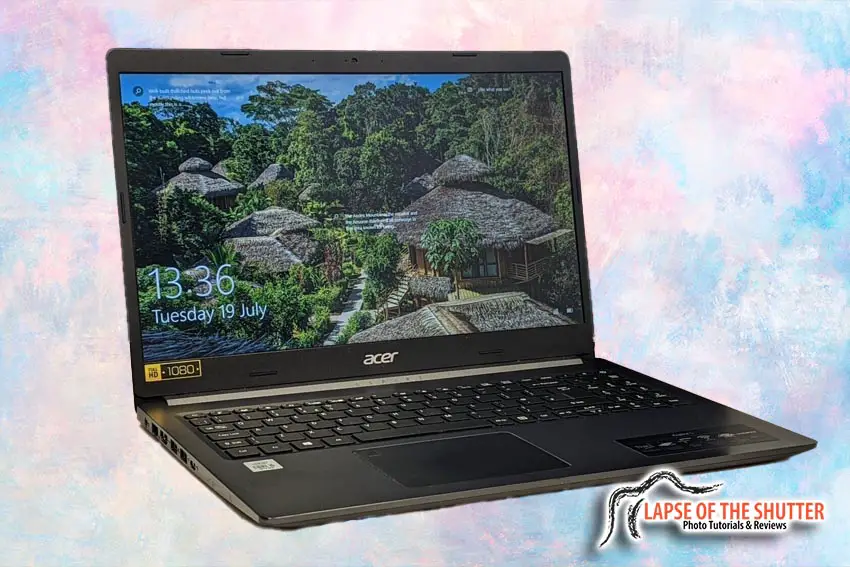
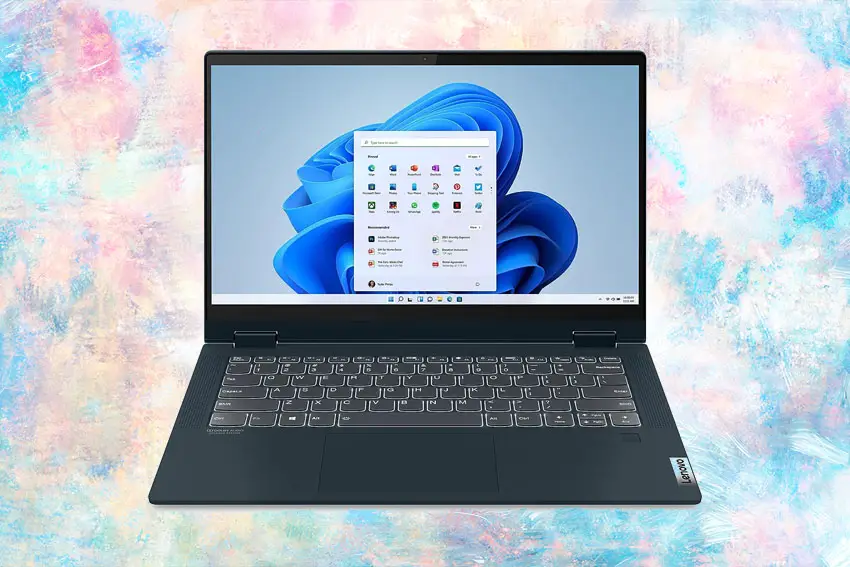
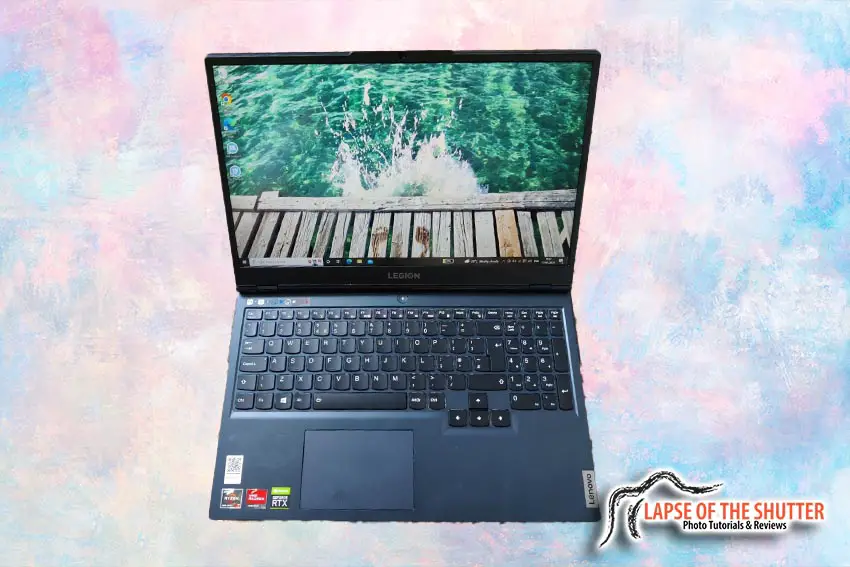
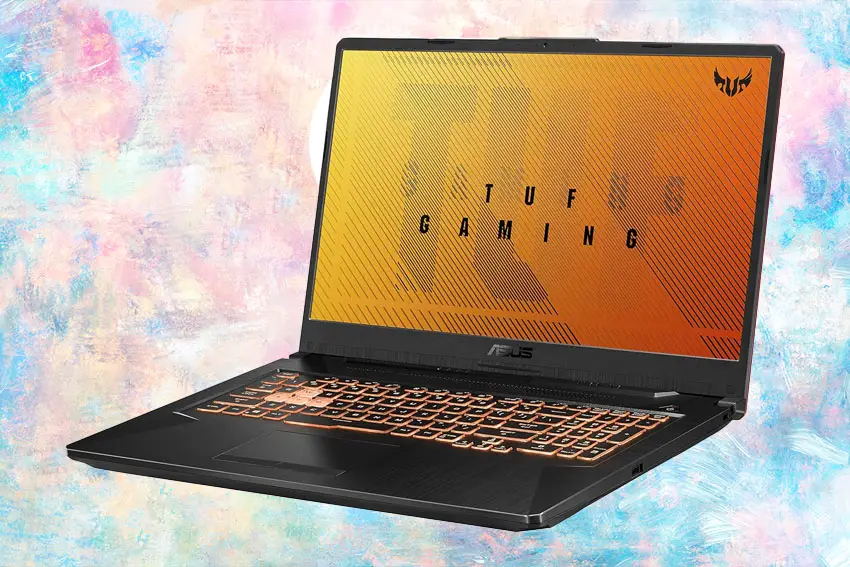
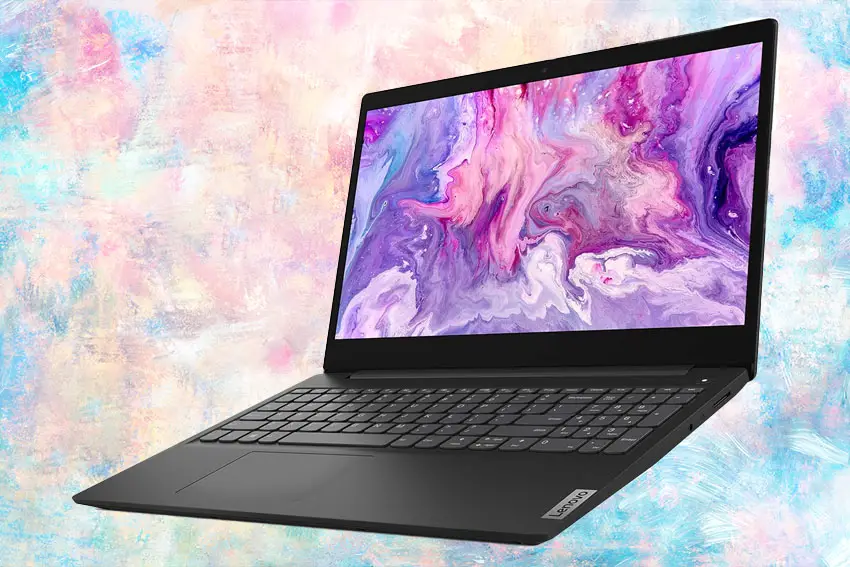
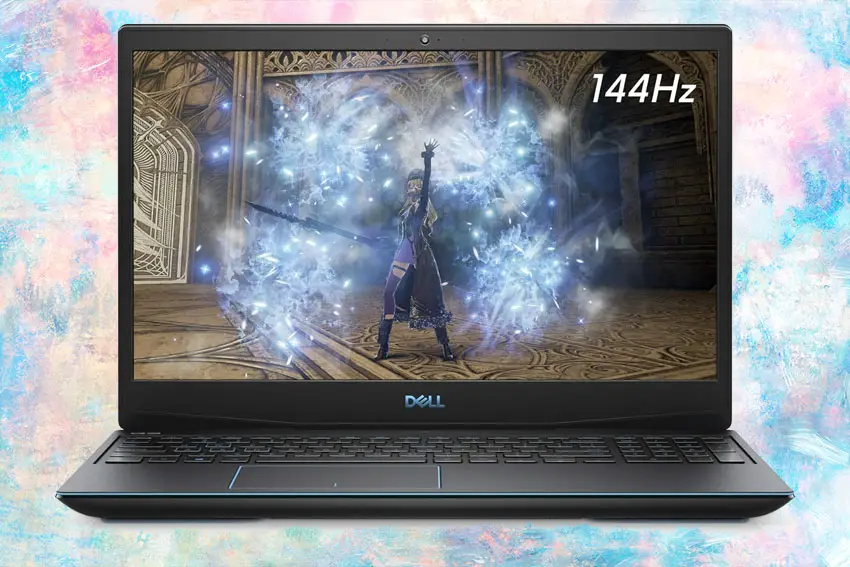

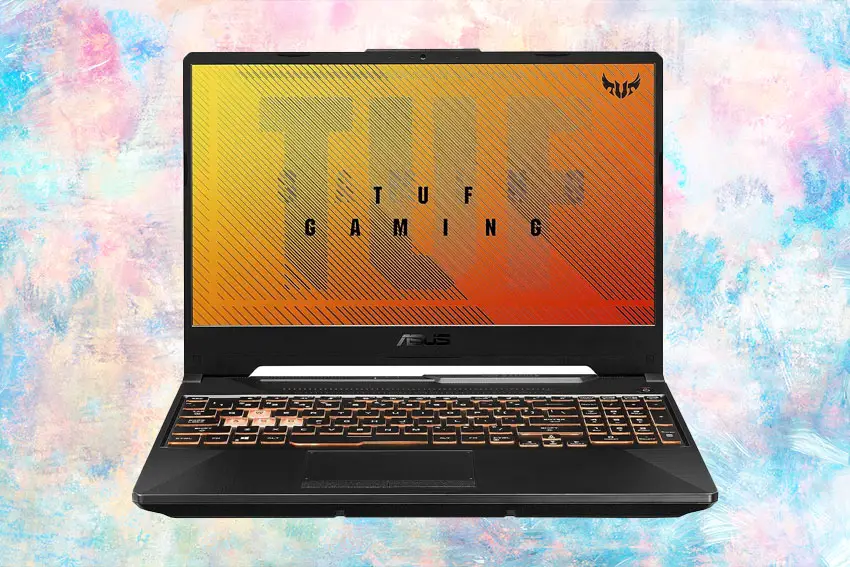



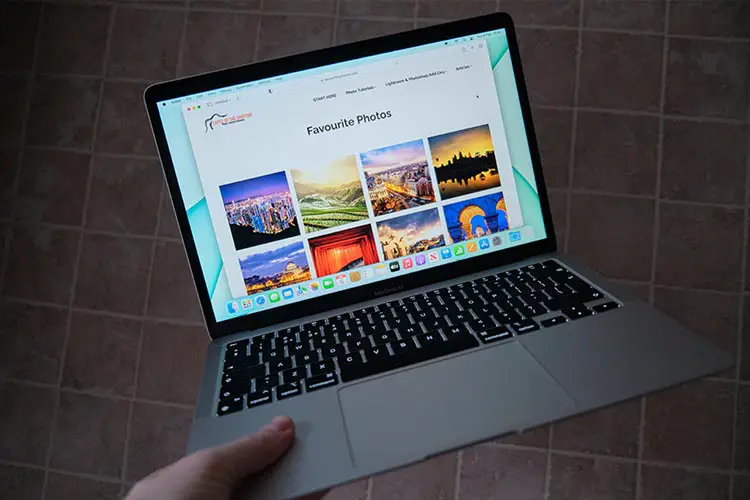



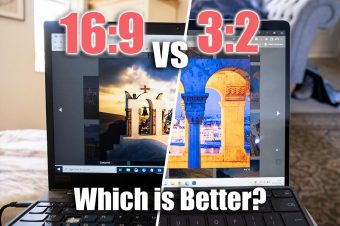
![[FIXED] TCL Roku TV Stuck on Red Screen?](https://www.lapseoftheshutter.com/wp-content/uploads/2021/10/tcl-roku-tv-stuck-on-red-screen-340x226.jpg)
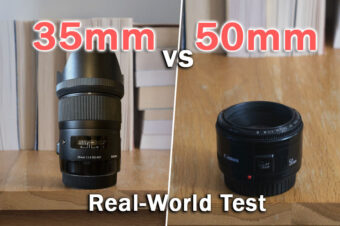

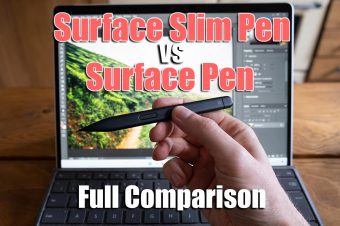
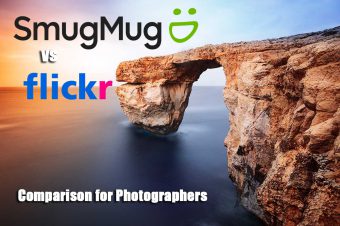
2 Responses
Ron Pankey
Tim,
Joined your club.
I’ve been reading about the best laptop for PS and have a question. Where do you find the sRGB color space percentages? I look on the manufacturer site and Amazon for these numbers and rarely are they given. Do you know the secret handshake or something?
Thanks,
Ron
Tim Daniels
Hi Ron
The sRGB percentages definitely can be difficult to find, and the simple answer is that it comes down to a lot of googling!
They are usually hidden away in the technical spec PDFs on manufacturers websites, but you have to check that the specific model numbers match up.
For example, the Lenovo Legion 5 on Amazon has a model number of 82B1000AUS, which has a 100% sRGB screen as per Lenovo’s product reference site: https://psref.lenovo.com/Detail/Legion/Lenovo_Legion_5_15ARH05H?M=82B1000AUS
But, if you get the same model of laptop but with a 120 Hz screen, rather than the 144 Hz screen, then it only has about 60% sRGB (45% NTSC is quoted), which you can see here: https://news.lenovo.com/wp-content/uploads/2020/04/Lenovo-Legion-5_AMD_15INCH.pdf
Tim